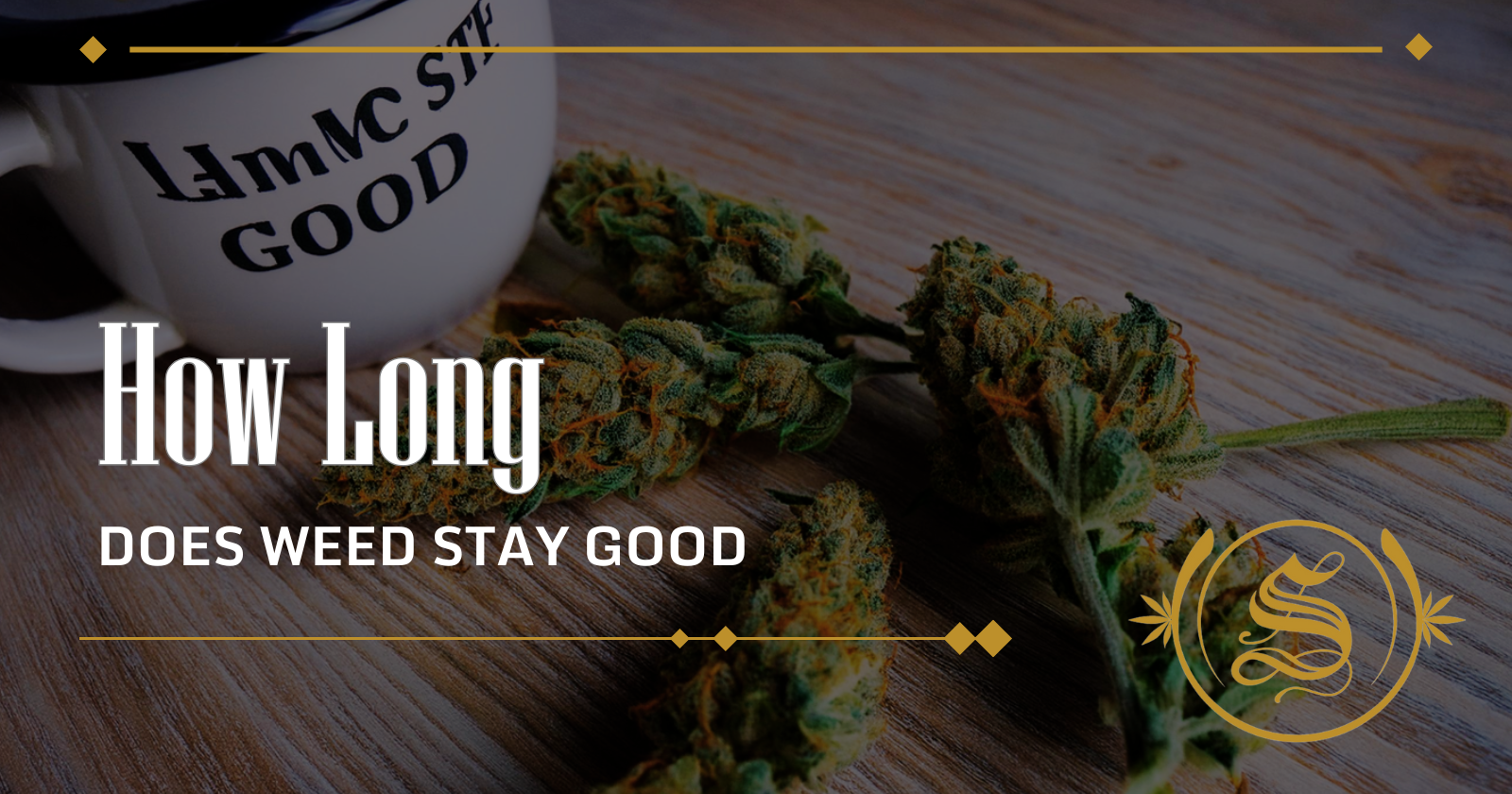Iftikhar Alam
Author
Reviewed by Cannabis Experts
Published on: October 14, 2021 | Updated on: September 4, 2024
Plants have been smoked for recreational purposes since the dawn of mankind. Humans have been looking for plants with intriguing qualities for as long as we have been walking on two legs, from tobacco to opium.
For a long time, smoking has been a popular practice due to its speed and efficiency. It is one of the most straightforward methods for delivering active substances to the brain.
This is because many herbal medicines are heat-activated, and the smoke is swiftly absorbed through the lungs’ lining and into the blood circulation. The only major issue with smoking is that it necessitates the use of equipment, also known as, paraphernalia.
Different types of weed paraphernalia
Some cannabis smoking accessories have been around for a long time and are still extremely popular today. Hand pipes, bongs, and joints are all popular ways to enjoy weed, and there are many different varieties to select from.
These traditional approaches might have drawbacks. They are likely to produce a lot of smoke and are not particularly stealthy. So, if you are attempting to keep your usage under wraps, you might want to look into alternative paraphernalia.
What is a pipe?
The pipe or “spoon” is a primitive smoking instrument that has been used by our forefathers for thousands of years. A pipe is made up of two parts: a bowl and a reservoir that leads to the smoker’s mouth.
A carb is a hole on the side of some pipes that allows air to flow through. Covering the carb causes a hit to accumulate in the pipe’s hollow. When you release the carb, all of the smoke is sent to the user at once.
Unlike some of the other paraphernalia, pipes can come in all shapes, sizes, and designs. They can also come in all types of materials but the glass pipe is the most common.
What is a bong?
A bong is a cannabis-smoking water pipe. Though it has been used in Asian and African civilizations for millennia, it was not until the 1940s that it was first mentioned in the West, and it was not widely utilized until the 1960s and 1970s. Then, in 2006, with the release of the slasher comedy Evil Bong, it acquired even more traction.
Though they come in a variety of forms, styles, and sizes, all bongs have the same basic components:
- Bowl: The portion of the bong that holds the ground-up flower. This is often detachable.
- Stem: The bowl is held in a tube. The downstem is connected to the bong’s body and leads to the water supply.
- Water chamber: The water that is filtered via the cannabis smoke is stored here.
- Neck and Mouthpiece: The tube that connects the water chamber to the mouthpiece.
You may, of course, add more elements in addition to the usual ones. You may add a percolator for better smoke filtering, an ice catcher for further cooling, or even a twin bowl if you are feeling very daring. The fundamental advantages of the bong, no matter how complex, are straightforward and appealing.
The bong’s purpose is to filter and chill weed smoke. Smoother hits and a more forgiving smoking session for your throat and lungs are the results. However, what you get in terms of more creative presentation and more pleasant inhales, you lose in terms of mobility.
Depending on the water pipe you choose, you may be able to mitigate this disadvantage. Bongs made of acrylic and silicone travel well and are almost unbreakable. Even yet, they are geared more for the chronically clumsy smoker than the frequent traveler.
What is a bubbler?
A weed bubbler is a novel smoking gadget that combines the advantages of full-sized bongs with traditional spoon pipes. The main difference between a bubbler and a bong is their size.
A bubbler pipe, like normal bongs, employs water filtration to generate very smooth and cold smoke. A bubbler pipe, on the other hand, is considerably more inconspicuous, easy to use, and portable than a full-sized bong.
When comparing bubblers and pipes, the main distinction is the usage of water filtration. A bubbler pipe, like a conventional spoon pipe, is tiny and simple to carry.
What is a joint?
A joint is a cannabis product that looks like a conical cigarette and may be smoked like one. Weed, paper, and a filter, or “crutch,” make up a joint. Rice, hemp, wood pulp, and other materials can be used to make joint rolling paper, with some specifically developed to enhance the weed’s flavor profile.
Crutches may be manufactured from a variety of materials, including thick paper, cardboard, and index cards. Crutches may be found at smoke shops, dispensaries, and online while rolling sheets can be found in most convenience stores, smoke shops, and dispensaries.
How to roll a joint
Step 1: Grind the cannabis
It should be easy to break down your cannabis if it has been properly dried. The use of a grinder prevents your fingers from becoming sticky and clinging to the joint paper. If you do not have a grinder, you can break down the herb by hand, with scissors, or in any other way.
Step 2: Create joint crutch/filter
Make a crutch, which is also known as a tip or filter. Begin by making a few “accordion” folds at the cardboard’s end, then rolling the material to the thickness you want for the junction.
The crutch is not required, but it does protect the weed from dropping out of the end or into your mouth when you smoke. It also gives the joint more stability and lets you savor every last bit of the joint without burning your fingers.
Step 3: Fill joint with cannabis
Fill the paper with the ground-up weed and (if you have prepared one) the crutch. You may start forming and shaping the joint with your fingers once the paper has the proper amount of bud (typically a half gram to a gram).
Step 4: Pack the joint
It is time to roll your joint once you have filled and formed it. To pack the cannabis down into its final cone shape, pinch the paper between your hands and roll it back and forth between them.
Step 5: Roll the joint
This stage may make or break your joint’s quality. Using just a little bit of wetness, tuck the unglued side of the paper into the roll, wrap it up, and use the glued edge to tack down one end of the paper. Begin with the crutch side, which might assist in guiding the paper as it rolls around.
Once one end of the seam has been tacked down, continue tucking and sealing the connection all the way to the other end.
Step 6: Finish your joint
Finally, pack the joint’s end to guarantee a consistent burn. A pen is ideal, but you can use almost anything else.
If you are on the run, a tiny stick, the point of your shoelace, or the drawstring of your sweatshirt are all fine alternatives. If you are not going to light your joint straight immediately, you might wish to twist the tip closed.
What is a blunt?
A blunt is a cigar with the insides hollowed out and filled with cannabis. Blunts may also be made using the same tobacco leaf sheets as are used to make cigars.
People can make their own blunt by purchasing blunt wraps or rolling sheets, or physically emptying a pre-rolled cigar or cigarillo (such as Swisher Sweets) and replacing the tobacco with cannabis.
Some companies have started offering hemp wraps and papers under the name “blunt papers,” but it is not a real blunt unless the paper is made with tobacco. There is no tobacco in a hemp blunt.
How to roll a blunt
Step 1: Grind your cannabis
Using a grinder, break down your cannabis into a crumb-like consistency. Using a grinder can help you keep an even burn.
Step 2: Prep the blunt wrap
You will need a tobacco wrap to roll your blunt. Connoisseurs have traditionally emptied a cigarillo (such as Swisher Sweets, Phillies, or Backwoods), but you can now get empty wrappers at most gas stations, liquor stores, or head shops.
Cut the blunt lengthwise using a blade, or “split” the blunt with your fingers if you have the correct touch. After splitting the blunt, empty the tobacco from the center and throw it away.
Step 3: Wet the tobacco wrap
Adding a tiny amount of wetness to your blunt wrap will make it easier to work with, shape, and seal any minor tears that may develop when emptying its tobacco contents. This can be done easily with saliva, but if you are rolling this blunt for someone else, you might want to use the tip of your finger and a little tap water.
Step 4: Fill it up
Fill the empty blunt wrapper with cannabis. 1-2 grams is enough for a regular size cigarillo, but if you are sharing your blunt, or are a skilled roller, you should be able to accommodate a lot more.
Step 5: Roll the blunt wrap
To have a symmetrical blunt, roll the cannabis between your fingers. If you do not wet the wrap thoroughly enough, it may crack.
Tuck the wrap under itself and moisten the inside of the exposed edge from end to end once you have packed and molded your blunt. Smooth any creases with your fingertips.
If you poke a hole in it or the blunt cracks while working with it, you may fix it with the sticky adhesive from a joint rolling paper.
Step 6-7: Bake the blunt
After you have rolled your blunt, you will want to “bake” or dry it to help it stay together and burn evenly. Run a lighter lengthwise beneath the seam and around the outside of the blunt to bake it. Keep the lighter about two inches from the blunt; you just want the heat, not the flame.
What are vaporizers?
Heating cannabis flower or concentrates to a temperature that converts the active cannabinoids and terpenes into vapor is the process of vaping weed. The majority of vaporizers are designed to heat cannabis products just below the point of combustion, which is between 180 and 190 degrees Celsius (356 to 374 Fahrenheit).
Vaping cannabis can activate more of the terpenes and minor cannabinoids contained in flower than smoking, which can burn off many of them. A device with precise temperature settings allows you to select a temperature that is appropriate for the cannabis or terpene you want to use.
Vaporizing cannabis may be done in a variety of ways. Tabletop vaporizers, portable vaporizers, and vape pens are the three primary kinds.
Portable vapes
If you want the mobility of a joint without the hassle of rolling, a portable flower vape could be the way to go. They come in several shapes and sizes, but the major appeal is that they are a discreet and portable way to vaporize flower.
Even while many of these portable alternatives do not have temperature control, they are still tastier and cleaner than burning cannabis. In the realm of cannabis paraphernalia, portable vapes are by far the most inconspicuous choice.
This is most likely your everyday carry choice if you love cannabis concentrate and are even slightly mobile. Many of these gadgets are indistinguishable from a disposable nicotine vape due to their tiny battery and simple design.
They are also highly user-friendly, in addition to their low-key appearance. Packing flower or oil into these vapes is straightforward and hassle-free. There are a few hybrid portable vapes out there if you want a vaporizer that allows you to go back and forth from cannabis to flower.
Table-top vaporizers
The ideal machine for a stay-at-home stoner. Table-top vapes not only provide fantastic cannabis consuming experience, but they also do it with the most advanced technology of any cannabis accessory.
These devices’ precise temperature control guarantees you get the most out of the cannabinoids you have paid for.
The lack of portability is a drawback, but if you are looking for a costly investment for your home cannabis experience, a table-top vaporizer is a great choice. When you take your first drag from your mouthpiece hose or your bag of cannabis vapor, it will all be worth it.
Vape pens
Pens are so named because the vaping device’s small form closely mimics that of a conventional pen. A battery and a cartridge make up a reusable vape pen.
Because you use the same battery with many cartridges, reusable vape pens are only half-reusable because you discard the empty cartridge once you have evaporated all of the liquid within.
Vape pen batteries are available in many forms, including those with or without buttons, a cylindrical or rectangular shape, a limited or extended battery life, and the ability to recharge, so there’s one to suit just about any personal choice. The mouthpiece, chamber, and heating element in a vape cartridge are all triggered by the vape battery.
The content provided on this blog is for informational purposes only and does not constitute medical, legal, or professional advice. Cannabis use is subject to local laws and regulations, which vary widely by jurisdiction. Always consult with a healthcare professional before starting any new treatment or altering an existing treatment regimen. The authors and publishers of this blog are not responsible for any actions taken based on the information provided herein. Use cannabis responsibly and in accordance with applicable laws. This blog is intended for adults aged 21 and over. The Sanctuary Dispensaries D186, D187.








